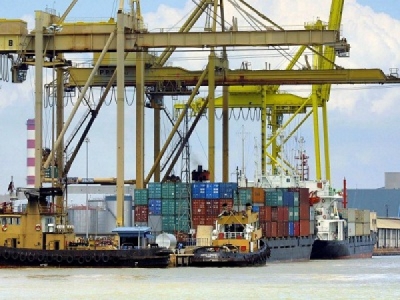
Posted on July 13, 2017
By Jose Barrock, The Edge Markets
A back-of-the-envelope calculation shows that business tycoon Tan Sri Syed Mokhtar Albukhary may have made at least a cool RM210 million from flipping Penang Port Sdn Bhd from his private outfit Seaport Terminal (Johore) Sdn Bhd to his listed flagship MMC Corp Bhd.
To be clear, Seaport Terminal is MMC’s largest shareholder, controlling 51.75% of the publicly traded company. This means the sale is a related-party transaction.
To recap, Seaport Terminal acquired Penang Port for RM170 million in a restricted tender process in early 2014, beating four other bidders.
Aspects of the sale included Seaport Terminal dredging the port’s waterways to about 15m from the existing 11m at a cost of about RM350 million, and the company assuming debts of about RM1.2 billion.
The dredging has yet to be done but Penang Port is already being sold to MMC for RM420 million — one tranche of 49% worth RM200 million was sold at the end of March this year while MMC’s shareholders voted for the remaining 51% worth RM220 million on May 11.
It is worth noting that MMC also assumed Penang Port’s existing debt of RM1.16 billion as at Dec 31, 2016, which bodes well for Syed Mokhtar and Seaport Terminal.
“But that is business in Malaysia — the rich get richer,” laughs a market watcher.
However, the sale may entail a considerable expense for MMC as one of Seaport Terminal’s obligations in the privatisation of Penang Port was the dredging of the waterways to the port. It looks like this obligation now lies with MMC. “This should be factored into the selling price, I think,” a banker remarks.
But port officials have come out to say that dredging is unnecessary at this juncture. “Last year, we asked all our major customers whether they were ready to bring their big container ships to Penang and all of them said no. Today, the big ships are calling at Port Klang and PTP (Port of Tanjung Pelepas),” Penang Port chief operating officer Sasedharan Vasudevan told The Edge in April.
“Global carriers are also forming shipping alliances, which means fewer port calls. Thus, we see no point in undertaking dredging works until we have larger ships calling at the port. But we will keep our finger on the pulse of the industry. We will ask our customers this question every year.”
The North Malaysia Shipping Agents Association also said the present water depth was sufficient for its ships.
Nevertheless, some quarters wonder how Seaport Terminal managed to not fulfil its obligation. It has been reported that the dredging project was slated to be undertaken in 2010 but was delayed due to the privatisation. It was also reported that the cost allocation of RM350 million for the dredging was made under the 10th Malaysia Plan (2011 to 2015).
Questions emailed to MMC went unanswered.
A source familiar with the deal says when Penang Port’s debt was restructured, the banks set a time frame for the dredging to be completed, as did the government when the privatisation was inked with Seaport Terminal. But these details are not known.
The market watcher comments, “I am sure the selling price incorporates the dredging that is required. (So) if Seaport Terminal is not undertaking the dredging, MMC will do it since it has bought Penang Port; it is just a question of who does it.”
Nevertheless, MMC has little to cry about. It is likely to unlock value from its port assets with a planned initial public offering either next year or in 2019. Other ports in MMC’s stable are Johor Port Bhd, NCB Holdings Bhd, which operates Northport in Port Klang, and PTP.
As it stands, MMC is likely to show a profit from Penang Port as the loss-making ferry service that Seaport Terminal had acquired with the port in the privatisation deal is being hived off to Prasarana Malaysia Bhd for RM1. The ferry service, which has long been an albatross around Penang Port’s neck, has bled red ink of RM16 million a year, according to news reports.
The port turned around in its financial year ended Dec 31, 2016, and according to Sasedharan, it posted an after-tax profit of RM67 million last year. In FY2013, just before Seaport Terminal came in, Penang Port suffered an after-tax loss of RM9.13 million on revenue of RM345.81 million.
With MMC in the driver’s seat, Penang Port has a strong parent. In its first three months of FY2017, MMC registered a net profit of RM55.14 million on sales of RM925.23 million.
If there is one thing Seaport Terminal has done, it has turned around the loss-making Penang Port, but should this turnaround translate into a clean gain of RM210 million for the former and, ultimately, Syed Mokhtar?
Source: The Edge Markets





